Issue 23
Fall 2020
Green Scene
Masha Tupitsyn
- In Roland Barthes’ A Lover’s Discourse, the word futile appears in a section called “Waiting.” In it, Barthes writes: “I am waiting for an arrival, a return, a promised sign. This can be futile, or immensely pathetic: in Erwartung (Waiting), a woman waits for her lover, at night, in the forest. There is a scenography of waiting: I organize it, manipulate it, cut out a portion of time in which I shall mime the loss of the loved object and provoke all the effects of minor mourning. This is then acted out as a play.”
- In Call Me by Your Name, Luca Guadagnino also invokes the phenomenology and scenography of waiting.1 Waiting is a central motif in the film. But in order to wait, one needs time. Elio waits for Oliver at the entrance to his house, where he can be seen waiting and where waiting can be enacted (visible). In addition to time, one also needs a place to wait. “I was the first to spot him when he came into the garden from the beach or when the flimsy silhouette of his bicycle, blurred in the midafternoon mist, would appear out of the alley of pines leaning to our house. I always tried to keep him within my field of vision. I never let him drift away from me except when he wasn’t with me” (Andre Aciman). Seeing this, the viewer might think: This is what it looks like to wait. Timothée Chalamet’s performance of Elio is moving because of its coherence: body matches up with feeling. Inner life made physical. Physical life made inner. Years ago, in a letter, a friend reminded me of the root of the word integrity, its fidelity to wholeness—the opposite of shaky. The Latin word Integritas, which entered the English language possibly through the French integrite, is synonymous with Christian ethics: Innocentia, simplicatas.
- “To be chaste is to know every possibility, without ever straying” (Godard, Hail Mary).
- By waiting, by staying in one place, by not straying, Elio, a virgin person, approaches the fullness of his desire for Oliver.
- The “play” of waiting that is acted out in Barthes’ description is, in this case, film, which Guadagnino makes the viewer conscious of as form. Film is a space to perform—to act, to see—waiting. Elio is absorbed, awash, chromatized in the sudden burst of green film. As the green in green, Elio becomes the scene.
- “Suppose I were to begin by saying that I had fallen in love with a color,” Maggie Nelson writes in Bluets.
- It is 2018 and where did the waiting go? Where are its scenes? What are its locations?
- What does it look like to love someone now, outside of cinema? What real hours do you put in? Call Me by Your Name is, in part, a recommitment to time. Audiences are moved by Elio’s intense longing for Oliver, yet they do not really understand why. What makes it so affecting? It isn’t simply the depth or focus of Elio’s desire. It is the way the absence of the smartphone creates a time and space for waiting, which creates a space for presence and attention. Waiting as practice.
- Barthes: “’Am I in love?—Yes, since I’m waiting.’”
- The green scene: The materiality of celluloid, of different exposures, the sprocket holes of a film strip—what Guadagnino says was a “fuck-up by the film lab, but also the miracle of cinema: twenty-four frames per second.” In “Notes on Photography & Accident,” Moyra Davey writes on Barthes’ punctum: “For Barthes, accident is the detail that wounds.” Both Davey and Barthes are picking up where Benjamin’s “The Work of Art in the Age of Mechanical Reproduction” left off. The botched Call Me by Your Name footage is the detail it hurts to see. The waiting scene wasn’t supposed to be green, Guadagnino says, but the added element of aleatory woundedness, the double wounding in the form of a mechanical color glitch—an accidental green—makes the scene the film’s punctum.2 While he waits for Oliver to come home on the steps of his summer house, Elio begins to fade, receding into the overwhelming pool of color. Lost in a time, the summer of 1983. Elio’s wounds of time are our wounds of time. The ones we never talk about anymore. Guadagnino says the “fuck-up”—his favorite—is about ephemerality. I think it is about durability. “The ephemeral is not the opposite of the eternal. The opposite of the eternal is the forgotten” (John Berger, From A to X). And: “The ephemeral is eternal” (Mike’s Murder, 1984). In 1983 Robert Bresson told French TV that he loved cinema because it is perishable. Hervé Guibert writes that photographs yellow and crack whenever they’re exposed to light “too often.” “After a while, light always revenges itself for having been taken a prisoner—it gathers itself back.” However bruised, accidental, and distorted the green footage is, however much it hurts for Elio to wait like this, he endures. Stays put. Cinema pierces us by giving us something and someone we rarely see in the digital Now: someone who cannot be distracted, dissuaded, deleted.
- Someone who waits. Someone who can be seen waiting.3
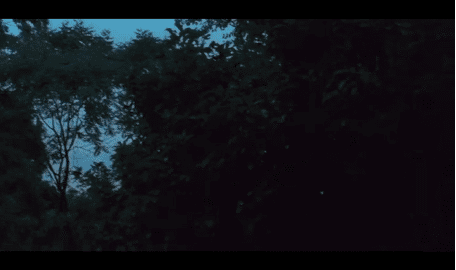
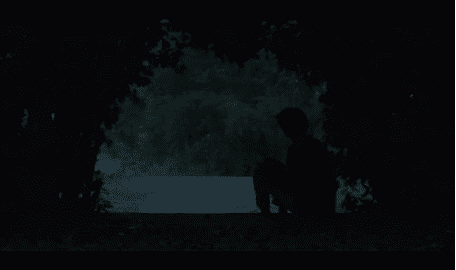
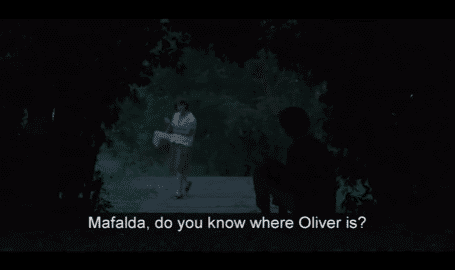




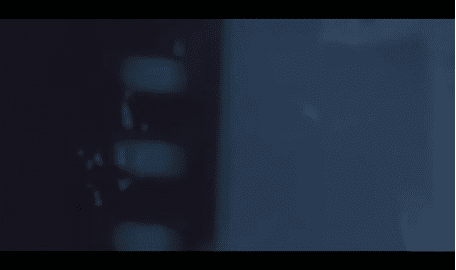
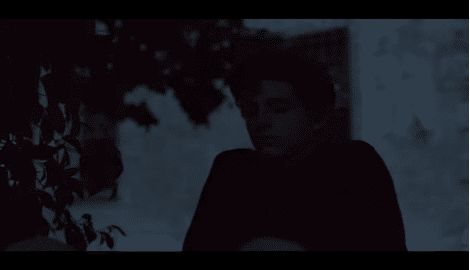
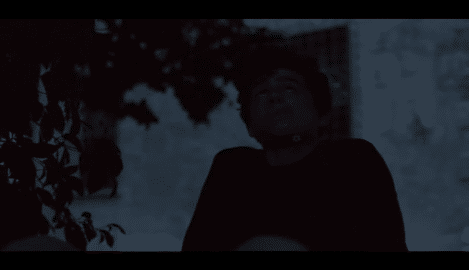
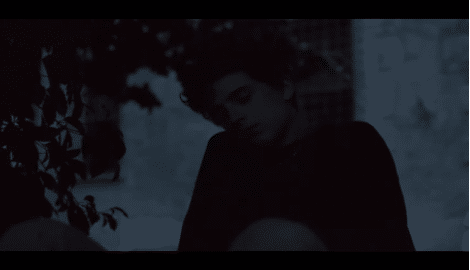
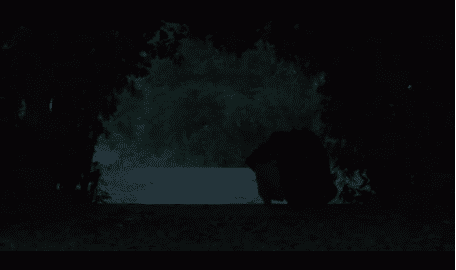
- In the same poem, Howe, echoing Davey and the Call Me by Your Name waiting scene, writes: “While painting takes time and gives headaches/A digital camera doesn’t blink and this produces a lack of analogies./It is not an open eye but an impure certainty./Empty frames stand waiting under the stairs.” The green frames are analogies Guadagnino has kept.
- “I now know that there exists another punctum than the ‘detail,’” Barthes writes. “This new punctum, which is no longer of form but of intensity, is Time, the lacerating emphasis of the noeme (that-has-been), its pure representation.” On the digital Now, Douglas Rushkoff writes that the “possibilities of kairos” need to be defended. Kairos, he says, is an antidote to digital compulsions and nonstop choice making. One could argue that Guadagnino’s Call Me by Your Name, along with I Am Love, are defenses of the lost possibilities of kairos in the internet age. Kronos refers to the surface world, kairos the world of the senses. Like eon, kairos is the time of creation, the temporality of becoming.
- “Those tears,” writes Luis De Miranda, “give birth to our world.”
- Watching this movie is also the way I wait for love.
- When people go to the movies now, where are they hoping to go? What is the place of cinema? Does it still exist?
- In an interview with Chalamet about Call Me by Your Name’s absence of smartphones, the singer Frank Ocean observes: “And they had to wait to talk.”
- “… and all we had was each other’s faces” (Aciman).
- Waiting was once part of everything. We had to wait in order for something to happen.
- Is the previsualization of digital work, “the little screens that allow us to compose, rearrange, jettison,” ahead of time, and which Davey writes replaced the “phenomenon of latency” in photography, apply to people’s inner lives as well?
- In Call Me by Your Name’s waiting scene, the world turns green. Green is not a color you fall in love with, as Nelson tells us she falls for blue, the “color of poison,” according to Caravaggio. Green is the color you become in love. It is “the color of my face,” Sufjan Stevens declares in the scene’s musical track. Writing about the Garden of Eden in Chroma, the filmmaker Derek Jarman asks if green is “the first color of perception?” The very first color Adam ever sees. First love, first sight, first color. What Fanny Howe means by “love is the green in green” is that love, which is green, turns everything green, including Guadagnino’s footage: “The Green Knight comes to King Arthur’s court, his hair and complexion green, riding a green horse, and carrying an axe of green gold. He commands Gawain to meet him at the Green Chapel at the spring solstice” (Jarman). In the scene where Elio and Oliver go on a trip to Bergamo together, they take a bus. After an initial close-up of them sitting inside the bus, the drive is filmed as an exterior shot of pure movement. Love is a green forest the bus drifts through. The summer green around them becomes both the inside (emotional) and the outside (mise en scène). The now unseen vehicle takes off like a spaceship into a levitating forest. The forest enters the frame. Elio and Oliver are flying through the green, as if they are themselves the green. “Love is the green in green.”
- Jarman: “Summer houses and temples to Venus are hidden in the green woods.”
- If green is first, what is last, blue? After the first love, does one ever wait like that again?
- Jarman: “Apropos of that green carnation, Havelock Ellis was certain that queers preferred green to any other color. Did they secretly drag up in all those emerald dresses that the girls had cast off? Hand a color swatch to a lad with cock on his mind and see what color he chooses.”
- Once, on my last night in the French countryside, my French lover’s sister cooked us a homemade vegetable soup. The color of the soup was such a deep forest green, we both paused to look at it before eating. My lover was a lot like Oliver—shaky, weak, full of fissures. But that night he took my hand under the table and squeezed it. He said, “Green is the color of hope.”
- Barthes writes that “waiting is an enchantment: I have received orders not to move … I forbid myself to leave the room, to go to the toilet, even to telephone (to keep the line from being busy) … All these diversions which solicit me are so many wasted moments for waiting, so many impurities of anxiety. For the anxiety of waiting, in its pure state, requires that I be sitting in a chair within reach of the telephone, without doing anything.” When Oliver finally comes home drunk, Elio pretends he is asleep. Oliver pretends that he is the kind of man who does not know or care that Elio has been waiting.
- What are you missing by waiting? What are you willing to miss by waiting?
- Rushkoff: “We must retrain ourselves to see the reward in the amount of time we get to spend in the reverie of solo contemplation or live engagement with another human being.”
- At the end of Call Me by Your Name, Elio is the first to answer Oliver’s winter phone call. Four months have gone by, but it is as though Elio has not moved all this time. Elio almost never leaves the scene of waiting. He does it only once, with tragic consequences. Forfeiting the waiting scene—which he can no longer physically stand—for the straight scene: Elio has sex with Marzia, a childhood friend, to kill time. He kills time with a woman he does not love or want in order to suspend it for Oliver. “… All I prayed for was for time to stop …The agony wore me out in the end, and on scalding afternoons, I’d simply give out and fall asleep on the living room sofa and, though still dreaming, know exactly who was in the room, who had tiptoed in and out, who was standing there, who was looking at me and for how long, who was trying to pick out today’s paper while making the least rustling sound … By noon, the agony of waiting to hear him say anything to me was more than I could bear” (Aciman).
- “If you knew the number, you could arrange to be called in a telephone box. You didn’t pay. You waited” (John Berger to Anne Michaels, Railtracks).
- “The movements of your phone are the movements of you as a person” (Edward Snowden, 2019).
- “Telephone: His voice makes him visible” (Robert Bresson).
- “Wait here so I can say love” (Jackson MacLow).
- “One may now ‘take the waiting out of wanting’” (Zygmunt Bauman).
- What do you do when your heart is broken because the landscape is broken? No longer green, but something permanently—even post—blue. You go to the movies to look for love.
- https://www.youtube.com/watch?v=8MMk-Pb8os0
- Orson Welles repeatedly stated that the greatest thing about cinema is its “divine accidents.” “Divine accidents are the only thing that keep films from being dead.” About Jean Cocteau’s 1946 film, Beauty and the Beast, which was filled with complications, accidents, and mistakes, Benjamin B. Dunlap remarked, “Some accidents were fruitful” (Cinematic Eye, 1979). On Off Camera with Sam Jones in 2016, Greta Gerwig talks about the rarity of true mistakes on film. She says, “There’s something very alive about them.”
- In Guadagnino’s new miniseries for HBO, We Are Who We Are, he embraces the digital: “I want to do something to be seen on the iPhone, iPad, computer and TV.”
About the Author
Masha Tupitsyn is a writer, critic, and multi-media artist. She is the author of Love Dog, LACONIA: 1,200 Tweets on Film, Beauty Talk & Monsters, co-editor of the anthology Life As We Show It: Writing on Film, and Picture Cycle. In 2015, she completed the 24-hour film, Love Sounds, an audio-essay and history of love in English-speaking cinema, which concluded an immaterial trilogy. The film was accompanied by a catalogue, published in 2015 by Penny-Ante Editions, and has been exhibited and screened in the United States, Canada, In 2017, she completed the first installment, DECADES: 1970s of her ongoing film series, DECADES. The second installment, DECADES: 1980s, was completed in 2019. DECADES composes a history of cinematic sound and score for each 20th century decade. Her writing on film, culture, feminism, and art has appeared in numerous anthologies and journals. Her introduction to Paul Schrader’s First Reformed will be published by Archway Editions in 2021. She has taught film, literature, and gender studies at The New School, Pratt, and various CUNYs.
